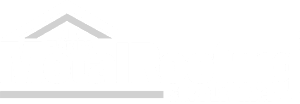Comparing Metal Roof Panel Types: A Guide for Central Florida Homeowners
Comparing Metal Roof Panel Types: A Guide for Central Florida Homeowners
Introduction
Metal roofs are becoming a top choice for homeowners in Central Florida, and it’s easy to see why. With the region’s frequent hurricanes, heavy rains, and intense heat, metal roofs offer unmatched durability and resilience. Unlike traditional asphalt shingles, metal roofs can withstand high winds, resist corrosion, and reflect sunlight, helping keep homes cooler during scorching summer months. This growing popularity is also driven by their eco-friendly nature and long lifespan, making them a smart investment for many Floridians.
In this guide, we’ll explore the different types of metal roof panels available and how they compare in terms of performance, aesthetics, and cost. Whether you’re building a new home or replacing an old roof, understanding these options will help you make an informed decision that suits your needs and budget. Let’s dive into the world of metal roofing and find out what makes each type unique.
Understanding the Metal Roof Panel Types Used in Central Florida
A metal roof panel is more than just a sheet of material—it’s a system designed to protect your home while enhancing its appearance. The type of panel you choose plays a crucial role in determining how well your roof performs in Central Florida’s challenging climate. Different panels offer varying levels of protection, visual appeal, and affordability, so it’s important to weigh these factors carefully before making a decision.
In Central Florida, homeowners typically choose from four main types of metal roof panels : corrugated (5V), standing seam, stone-coated steel/tile, and specialty options like aluminum or copper. Each has distinct characteristics that cater to specific needs, whether you’re looking for cost-effectiveness, modern design, or superior weather resistance. Understanding these systems will set the stage for a detailed comparison later in this guide.
Corrugated (5V) Metal Roof Panels
Corrugated (5V) metal roof panels are known for their distinctive wavy pattern and exposed fastener installation method. These panels are often made from galvanized steel or aluminum, offering a balance between strength and affordability. They’re commonly used on agricultural buildings but have gained traction among residential homeowners due to their lower price point. Typically, 5V panels cost less than other metal roofing options, making them attractive for budget-conscious buyers.
While 5V panels are economical and straightforward to install, they come with trade-offs. Their shorter lifespan compared to other metal roofs means more frequent replacements, and the industrial look isn’t for everyone. However, some Floridians appreciate their rustic charm and practicality, especially for sheds, garages, or vacation homes. As we move forward, let’s examine another popular option: standing seam metal roofs.
Standing Seam Metal Roof Panels
Standing seam metal roofs feature raised seams that run vertically along the length of the panels, creating a sleek, modern look. One of the standout features of this system is its concealed fasteners, which reduce the risk of leaks and improve durability over time. These panels are custom-cut to fit the roof, minimizing joints and ensuring maximum weather resistance—a key advantage in hurricane-prone areas like Central Florida.
Beyond their functionality, standing seam roofs are versatile enough to complement both contemporary and traditional home designs. While they tend to be pricier upfront and require skilled installation , their longevity and low maintenance make them a worthwhile investment. For homeowners seeking a durable, stylish solution, standing seam panels are worth considering. Next, let’s take a closer look at stone-coated steel and metal tile options.
Stone-Coated Steel and Metal Tile Panels
Stone-coated steel and metal tile panels combine the best of both worlds: the durability of metal with the classic appearance of traditional roofing materials. These panels are coated with stone chips embedded in an acrylic finish, allowing them to mimic the look of clay tiles, slate, or shingles. This aesthetic versatility makes them a favorite among homeowners who want curb appeal without sacrificing performance.
In addition to their beauty, these panels excel in impact resistance, making them ideal for hail-prone regions. They’re also lightweight, reducing structural strain on older homes. While they may come at a higher price than 5V panels, their durability and minimal upkeep justify the investment. Now, let’s shift our focus to the materials themselves—aluminum, Galvalume, and copper—and how they stack up in Central Florida’s climate.
Aluminum, Galvalume, and Copper Roofing Panels
When it comes to metal roofing materials, aluminum stands out for its rust-resistant properties and lightweight nature. This makes it particularly suitable for coastal homes where salt spray could corrode other metals. Aluminum is also highly malleable, allowing for intricate designs and easier installation.
Galvalume, a blend of aluminum and zinc coating over steel , strikes a balance between strength and corrosion resistance. It’s slightly heavier than pure aluminum but offers excellent protection against rust and weathering, making it a reliable choice for inland properties. On the premium end, copper roofing provides unmatched elegance and longevity. Though expensive, copper develops a beautiful patina over time and requires virtually no maintenance. For Central Florida’s humid, stormy conditions, aluminum and Galvalume are often the go-to options, while copper appeals to those prioritizing luxury and aesthetics.
Panel Quality Levels: Standard, Prime, and Ultra
Metal roof panels come in various quality levels, typically categorized as Standard, Prime, and Ultra. These grades reflect differences in paint finishes, warranties, and dent resistance. Standard panels are the most affordable but may lack advanced protective coatings, while Ultra panels boast premium features like enhanced UV protection and superior scratch resistance.
Upgrading to a higher-quality panel often involves only a modest increase in cost but delivers significant benefits in terms of longevity and performance. Warranties for these panels can range from 20 to 50 years, covering everything from paint fade to perforation caused by rust. Investing in better quality ensures your roof remains resilient through decades of Central Florida’s harsh weather.
Gauge (Thickness) and Fastener Considerations
The gauge of a metal roof panel refers to its thickness , with lower numbers indicating thicker, more durable panels. In Central Florida, thicker panels are recommended to withstand strong winds and potential impacts from debris during storms. Thicker panels also resist dents better, maintaining their appearance over time.
Fastener type is equally important ; exposed fasteners are prone to loosening and leaking, whereas concealed fasteners provide a watertight seal. Choosing the right combination of gauge and fastener can significantly affect your roof’s longevity and maintenance needs, especially given Florida’s unpredictable weather patterns.
Performance in Central Florida’s Climate: Wind, Rain, and Sun
Central Florida’s climate poses unique challenges for roofing materials, including hurricanes, torrential rain, and relentless sun exposure. Standing seam and stone-coated steel panels excel in these conditions due to their superior wind resistance and ability to shed water effectively. Corrugated panels, while durable, may not perform as well in extreme scenarios unless properly installed and maintained.
Building codes in Florida mandate strict standards for wind uplift and impact resistance, ensuring roofs can handle severe weather. Homeowners should prioritize panels that meet or exceed these requirements to maximize safety and peace of mind. By selecting the right panel type, you can ensure your roof stands strong against whatever Mother Nature throws its way.
Energy Efficiency and Cool Roof Features
Reflective coatings and advanced paint technologies make metal roofs a top choice for energy efficiency in Central Florida. These “cool roof” features help deflect sunlight, reducing heat absorption and lowering cooling costs. This benefit is particularly valuable in a region where air conditioning usage spikes during the summer months.
Maintenance and Lifespan Expectations
Maintenance for metal roofs varies by panel type. Standing seam and stone-coated steel panels generally require minimal upkeep, aside from periodic inspections and cleaning. Corrugated panels may need more attention to fasteners and seams to prevent leaks. On average, metal roofs last 40 to 70 years , depending on the material and quality level.
Warranties for metal roofs typically cover paint finish, rust-through, and structural integrity. Longer warranties often indicate higher-quality products, giving homeowners confidence in their investment. Regular maintenance extends the life of any metal roof, ensuring it continues to perform well for decades.
Cost Comparison and Return on Investment
Costs for metal roof panels vary widely , with corrugated panels starting at around $3 per square foot and standing seam or stone-coated options reaching $10-$15 per square foot. While the initial expense may seem steep, the long-term savings from reduced energy bills, fewer repairs, and extended lifespan make metal roofs a financially sound choice.
Beyond cost savings, metal roofs can boost your home’s resale value. Potential buyers appreciate the added durability and modern appeal, making your property more attractive in competitive markets. When weighing options, consider both upfront costs and long-term benefits to determine the best value for your investment.
How to Choose the Right Metal Roof Panel for Your Central Florida Home
Selecting the perfect metal roof involves balancing several factors, including your location, aesthetic preferences, and long-term goals. If you live near the coast, prioritize corrosion-resistant materials like aluminum or Galvalume. For a modern look, standing seam panels might be ideal, while stone-coated steel offers timeless elegance.
Consulting with experienced roofing contractors is essential to get personalized recommendations tailored to your home’s specific needs. Local professionals understand the nuances of Central Florida’s climate and building codes, ensuring you make the best possible choice. Use this guide as a foundation for your research and reach out to experts for detailed estimates and advice.
Frequently Asked Questions
What is the most popular type of metal roof panel for homes in Central Florida?
Standing seam and corrugated (5V) panels are the most popular choices in Central Florida. Homeowners appreciate their blend of affordability, durability, and availability, along with their ability to meet local building codes and weather demands.
How does panel thickness (gauge) affect durability in Florida?
Thicker panels (lower gauge numbers) offer greater durability and resistance to dents and storm damage. In Florida, 24- or 26-gauge panels are commonly recommended to ensure optimal performance in severe weather.
Is aluminum or steel better for coastal homes?
Aluminum is preferred for coastal homes due to its exceptional rust resistance in salty environments. Coated steel options like Galvalume are also viable but may require additional maintenance to prevent corrosion over time.
Are metal roofs noisy during heavy rain or storms?
Metal roofs are not inherently noisy if installed correctly. Proper insulation, attic space, and underlayment help dampen sound, ensuring a quiet indoor environment even during heavy rain or storms.
How long do metal roof panels typically last in Florida?
Metal roofs in Florida typically last 40 to 70 years, depending on the material and quality. Stone-coated steel and standing seam panels often come with warranties lasting 30-50 years, reflecting their exceptional longevity.
Conclusion
Choosing the right metal roof panel for your Central Florida home involves careful consideration of durability, aesthetics, and cost. From the affordability of corrugated panels to the sleek elegance of standing seam systems, each type offers unique advantages tailored to the region’s demanding climate. Balancing these factors ensures your roof not only protects your home but also enhances its value and curb appeal.
Key takeaways: Central Florida’s weather makes panel type and material selection critical—choices impact performance and value for decades. Balancing your budget, preferences, and long-term needs is essential when comparing metal roof panels. Reach out to local roofing professionals for individualized recommendations and estimates. Before finalizing your decision, use this guide to compare panel types carefully and maximize the longevity and resilience of your home’s new roof.

